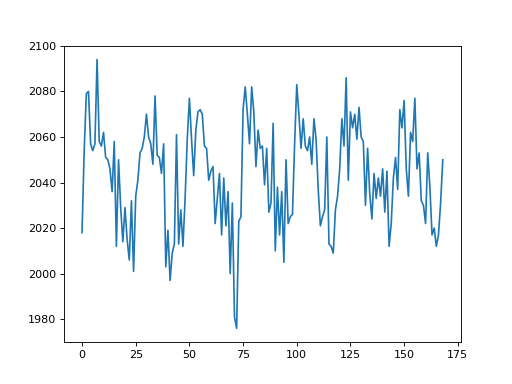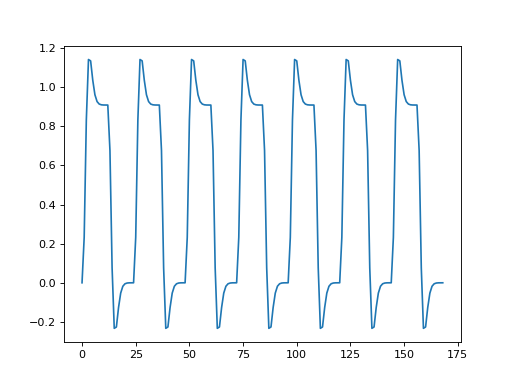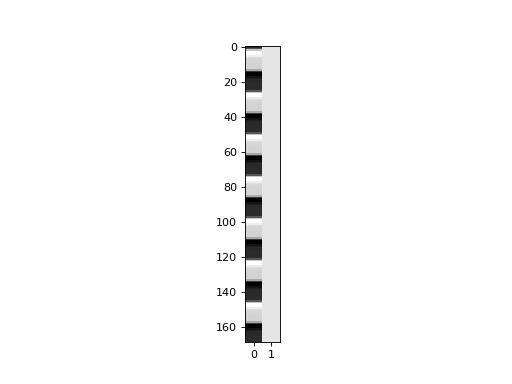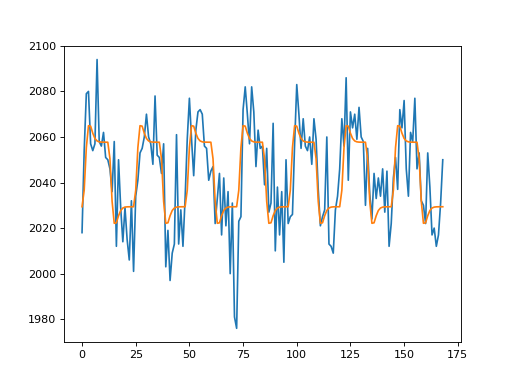\(\newcommand{L}[1]{\| #1 \|}\newcommand{VL}[1]{\L{ \vec{#1} }}\newcommand{R}[1]{\operatorname{Re}\,(#1)}\newcommand{I}[1]{\operatorname{Im}\, (#1)}\)
Modeling a single voxel¶
Earlier – Voxel time courses – we were looking at a single voxel time course.
Let’s get that same voxel time course back again:
>>> import numpy as np
>>> import matplotlib.pyplot as plt
>>> import nibabel as nib
>>> # Only show 6 decimals when printing
>>> np.set_printoptions(precision=6)
We load the data, and knock off the first four volumes to remove the artefact we discovered in First go at brain activation exercise:
>>> img = nib.load('ds114_sub009_t2r1.nii')
>>> data = img.get_data()
>>> data = data[..., 4:]
The voxel coordinate (3D coordinate) that we were looking at in Voxel time courses was at (42, 32, 19):
>>> voxel_time_course = data[42, 32, 19]
>>> plt.plot(voxel_time_course)
[...]

Now we are going to use the convolved regressor from Convolving with the hemodyamic response function to do a simple regression on this voxel time course.
If you don’t have it already, you will need to download
ds114_sub009_t2r1_conv.txt.
>>> convolved = np.loadtxt('ds114_sub009_t2r1_conv.txt')
>>> # Knock off first 4 elements to match data
>>> convolved = convolved[4:]
>>> plt.plot(convolved)
[...]

First we make our design matrix. It has a column for the convolved regressor, and a column of ones:
>>> N = len(convolved)
>>> X = np.ones((N, 2))
>>> X[:, 0] = convolved
>>> plt.imshow(X, interpolation='nearest', cmap='gray', aspect=0.1)
<...>

\(\newcommand{\yvec}{\vec{y}}\) \(\newcommand{\xvec}{\vec{x}}\) \(\newcommand{\evec}{\vec{\varepsilon}}\) \(\newcommand{Xmat}{\boldsymbol X} \newcommand{\bvec}{\vec{\beta}}\) \(\newcommand{\bhat}{\hat{\bvec}} \newcommand{\yhat}{\hat{\yvec}}\)
As you will remember from the introduction to the General Linear Model, our model is:
We can get our least squares parameter estimates for \(\bvec\) with:
where \(\Xmat^+\) is the pseudoinverse of \(\Xmat\). When \(\Xmat\) is invertible, the pseudoinverse is given by:
Let’s calculate the pseudoinverse for our design:
>>> import numpy.linalg as npl
>>> Xp = npl.pinv(X)
>>> Xp.shape
(2, 169)
We calculate \(\bhat\):
>>> beta_hat = Xp.dot(voxel_time_course)
>>> beta_hat
array([ 31.185514, 2029.367689])
We can then calculate \(\yhat\) (also called the fitted data):
>>> y_hat = X.dot(beta_hat)
>>> e_vec = voxel_time_course - y_hat
>>> print(np.sum(e_vec ** 2))
41405.57...
>>> plt.plot(voxel_time_course)
[...]
>>> plt.plot(y_hat)
[...]
